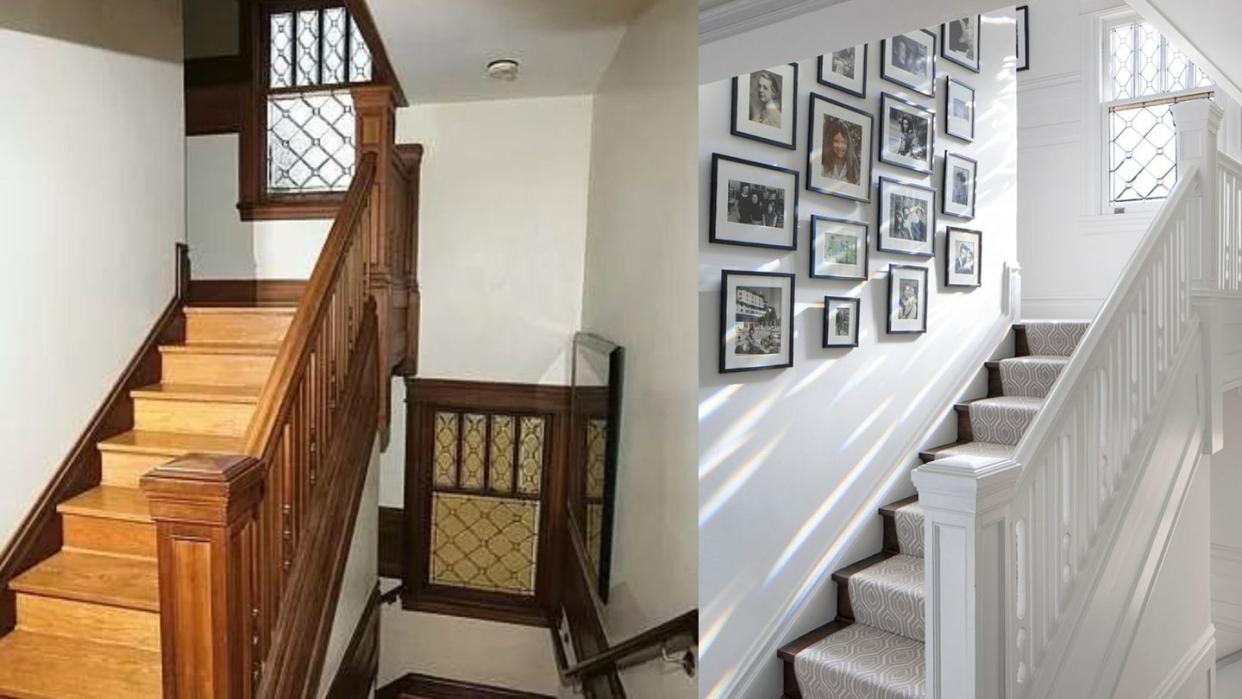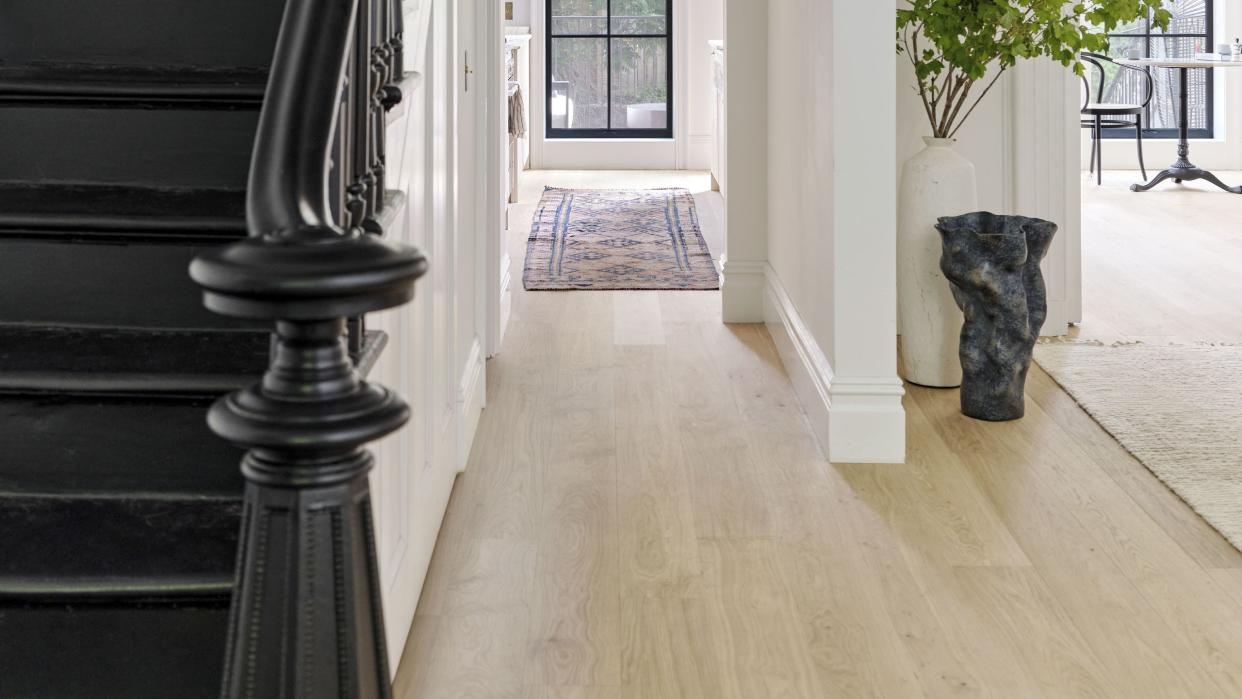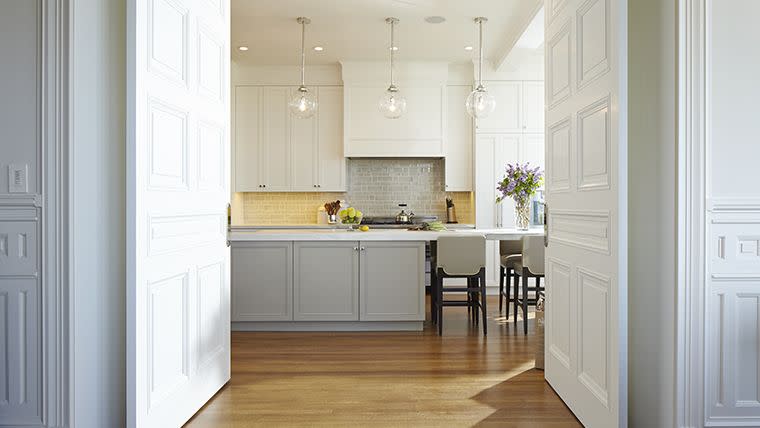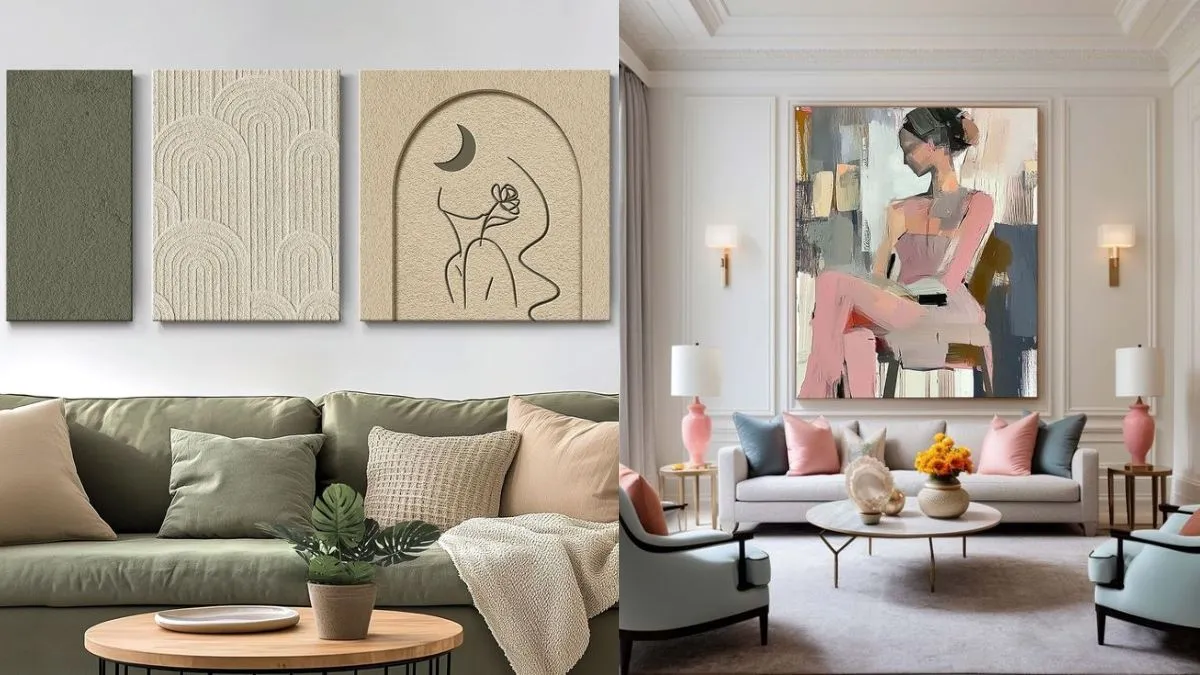Before a Tudor-style house in my town sold last year, it hosted an estate sale. With very few owners in its history, it had a time capsule of an Arts and Crafts interior that attracted a lot of attention from my local home rehabbers’ Facebook group. One member got there early and posted photos along with gushing comments about the original stained glass windows, wallpaper, and “amazing” and “fantastic” wood molding: “possibly American chestnut,” aka the holy grail of renovators everywhere because it’s now extinct.
“Let’s PRAY they don’t paint all the trim white,” said one commenter in response. Another replied, “This is what an Arts and Crafts interior is supposed to look like…I really hope the new owners, or some real estate agent/house stager doesn’t come in and paint it all white…which is the current fad.”
Based on the Zillow pictures, the people who staged the house did keep the dark woodwork, and it sold immediately (seemingly within days) for 59 percent over the asking price. Would you call that proof that the “fad” for light and bright is fading or that buyers don’t always appreciate a blank slate?
If you’re a design purist, you want to stick as close to your home’s original design style as possible. The fact that this one got snapped up so fast seems to support the value in history. But is it always the mortal sin my fellow rehabbers feel it is to paint American chestnut, mahogany, walnut, or any original woodwork?
Or are you justified in making compromises if you want your house to feel more like a family home than a museum or to sell for as much as possible?
I reached out to designers to learn how they make thoughtful choices about woodwork and what options they’ve been opting for recently—and I learned that the “fad” is in fact shifting.
It Depends on the Wood

San Francisco–based designer Kendall Wilkinson painted the woodwork in her own 1915 house (pictured above), which had “magnificent architectural details” but felt “moody and dark” when her family bought it. “I painted it off-white, using Benjamin Moore’s Cloud White. It immediately opened up the entire home,” Wilkinson reports. Clearly she doesn’t think painting wood molding and paneling is a sin. In fact, she says it’s the best low-lift, high-impact change you can make when renovating. But that doesn’t mean she always paints original woodwork white.
“Some people say it is sacrilegious to paint wood,” Wilkinson says. “We will leave high-quality woods like walnut, mahogany, or oak untouched,” especially in historical Victorian homes. “Gumwood, which was the wood in my home, we tend to paint. It is not high-quality hardwood, but it was available in San Francisco when the home was built. It doesn’t have a beautiful grain pattern, and the stain is often very dark.”
Barry Bordelon and Jordan Slocum, aka the Brownstone Boys, work primarily in Brooklyn brownstones and think about what to do with ornate wood molding daily. They get excited whenever they find a “rich wood, like walnut or mahogany,” Slocum says. Walnut in particular is “pretty rare” and a “real treat” to find, adds Bordelon.
In order to know what you’re working with, you have to strip away all the gummy layers of paint or varnish. You might think you know what your original woodwork looks like if it’s varnished, not painted, but varnish really changes how wood looks. “If you varnish it again and again and again and again, it gets darker and darker and it gets really thick,” says Slocum. “A lot of times they put these shiny layers over it. So we still like to take that off as much as we like to take paint off.”
Bordelon and Slocum say stripping old varnish is just as satisfying as stripping away old paint—and actually a little easier. They find that doing so helps them conceive an overall design aesthetic and get a sense of how a home should feel. “The houses we work on are very ornate with that original woodwork, and sometimes it really can set the tone for the overall aesthetic for and design for the house,” says Slocum.
It Depends on the Layout

For Slocum and Bordelon, whether to paint or stain woodwork depends on the amount of wood in the house, the light the space gets, and their plans for reconfiguring the floor plan, which almost always involves moving the kitchen. If the woodwork downstairs is special but what’s upstairs was cheaper and less detailed, they might restore it on the parlor floor and replace it upstairs with new painted trim for a cleaner look, which is better for a budget than refinishing everything.
“Sometimes there’s a balance that needs to be struck,” says Slocum. “We’re not necessarily always trying to make a period piece…We’re creating a house for a family that’s going to live there and already has a couple of kids and maybe wants more, or they’re a young couple and they want kids. So we’re making the house work for their modern lifestyle.”

Wilkinson is flexible about using stained and painted woodwork in a home too, but there’s one thing she would never do—you might call it a sin in her book. She doesn’t combine stained and painted wood in the same room. “You can do one room painted and one stained as long as there are clear thresholds so the spaces are delineated from one another. Visually, it’s okay to see if one scene is painted while the other is stained; the interior design plan will create the flow and make sense of that,” she says. She applied that approach in the project pictured above in San Francisco’s Pacific Heights neighborhood.
It Depends on Your Aesthetic
In general says Wilkinson, the decision on the wood depends on the overall vibe of the house. “We leave the wood for a more traditional look, although depending on its condition, we may have it sanded, restored, and then restained,” she says. In the Pacific Heights home, Wilkinson maintained the dining room, entry, stairway, and stairway in the original wood stain, but painted the wood paneling in the other areas for a more contemporary look. When painting, she uses the same color as on the wall, but a different finish, like semigloss or satin, to call attention to the details. (She finds that light trim with walls in a completely different color looks less modern and more formal.) Some of her favorite paint colors right now are Dove White, Cloud White, Atrium White, and, “for a touch more vanilla creme,” Ivory White.
You don’t necessarily have to paint your woodwork to get a contemporary look, though. One of Slocum and Bordelon’s current projects has what Slocum calls “overwhelming amounts of ornate woodwork.” So they made it the center of the design. They stripped the old varnish, which had a patina the clients didn’t care for, and got all the wood to a consistent tone—albeit still quite dark. Instead of painting it to lighten everything up, they shifted gears. “We did a very dark aesthetic throughout the home, accenting it with light furniture,” he says. “I think that balance helped the clients get the aesthetic they wanted, that they weren’t living in a period piece.”
In the past two years, Slocum says they’ve actually been starting to hear inquiries about dark varnish. “I think a trend moving forward is we’re going to see a lot of walnut coming back,” he adds. “Before, everybody dreamed of having that light white oak look, which is still beautiful. And you know, we ourselves gravitate toward a Scandinavian look. But I do think that dark wood is definitely gonna make a comeback, and I think we’re gonna see a lot of it in the next year or two.”
So, purists, rejoice! Your faithfulness is about to be rewarded. But we know you don’t care about trends anyway.
You Might Also Like









